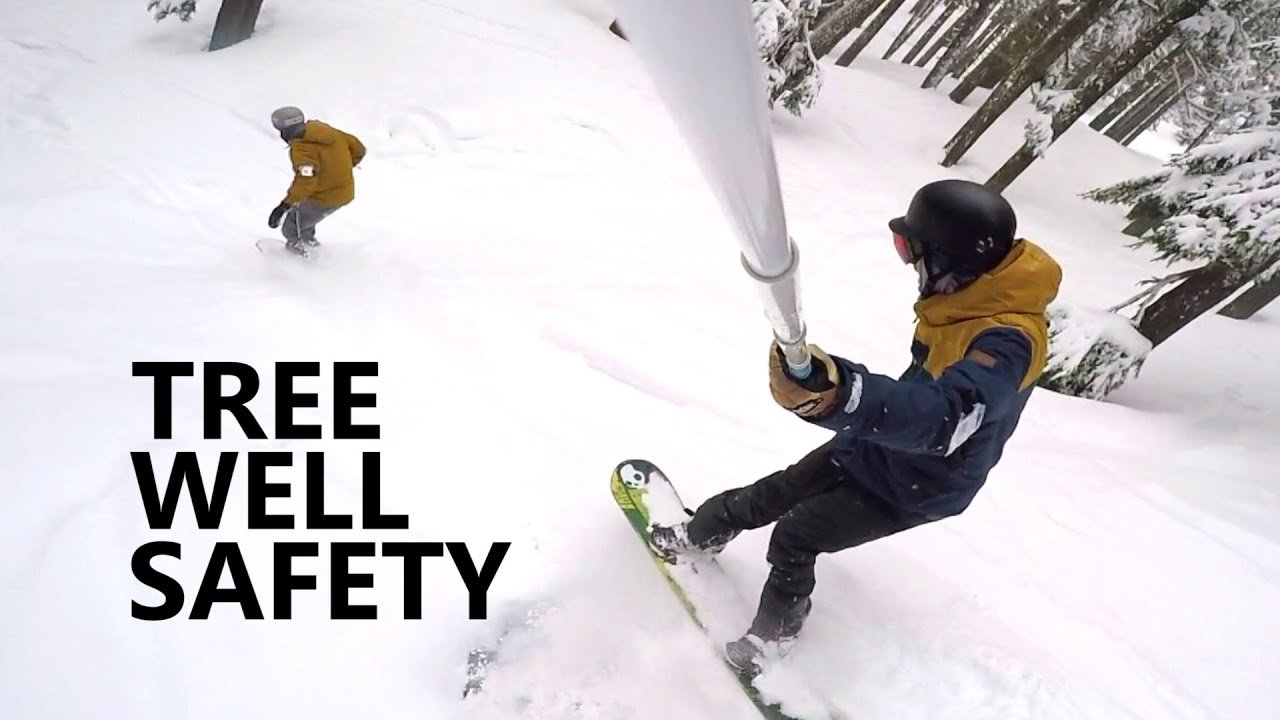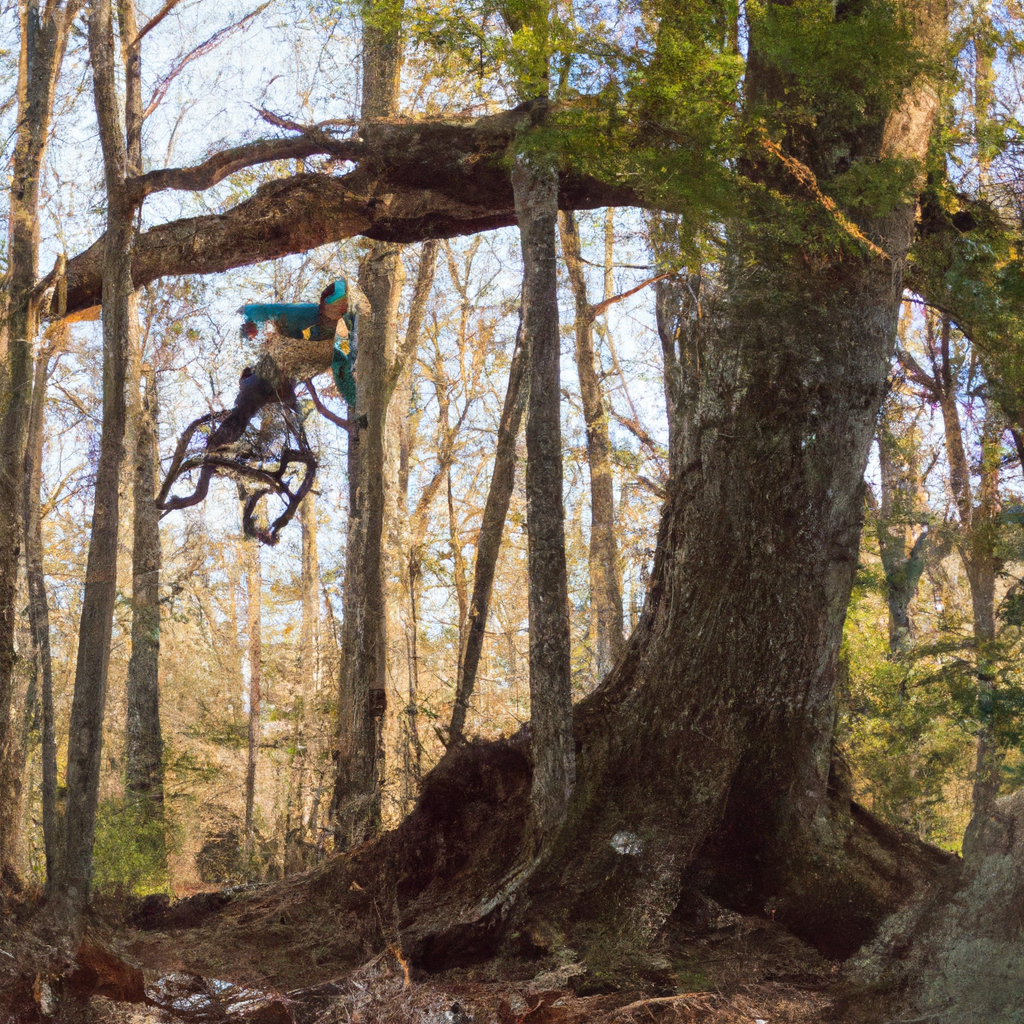
Tree Riding + Tree Well Safety
In the video “Tree Riding + Tree Well Safety” by SnowboardProCamp, the narrator and his friend Garrett take viewers on a thrilling ride through the trees at Mt. Bachelor. Along the way, they discuss the importance of tree safety and avoiding tree wells, which are hollowed-out areas at the base of trees that can be dangerous to snowboarders. The video highlights the need for awareness and offers tips for staying safe, such as riding with a partner, avoiding distractions like music, and going feet first if you ever find yourself near a tree well. By providing valuable information and sharing their own experiences, the video aims to promote tree riding while emphasizing the importance of staying safe on the slopes.
Tree Riding
Introduction to Tree Riding
Tree riding is a thrilling and exhilarating experience for snowboarding and skiing enthusiasts. It involves navigating through dense forests, gliding between the trees, and making quick turns on varying terrain. Tree riding offers a unique and immersive experience in nature, providing riders with a sense of adventure and excitement.
Benefits of Tree Riding
Tree riding provides several benefits for riders. Firstly, it offers an escape from crowded slopes, allowing riders to enjoy a more serene and peaceful environment. Riding through the trees also requires a higher level of skill and concentration, making it a great opportunity for experienced riders to challenge themselves and improve their technique. Additionally, the natural features found in tree-filled areas, such as natural jumps and drops, provide endless possibilities for creativity and fun.
Choosing the Right Area for Tree Riding
When choosing an area for tree riding, it is important to consider the terrain and conditions. Look for areas with a good amount of snow coverage and well-spaced trees. Dense forests with tightly packed trees can be dangerous and make navigation difficult. It is also crucial to check the local regulations and ensure that tree riding is allowed in the designated area.
Equipment and Gear for Tree Riding
Having the appropriate equipment and gear is essential for a safe and enjoyable tree riding experience. Riders should wear a helmet to protect their heads from potential collisions with trees or branches. It is also recommended to wear goggles to shield the eyes from snow and debris. In terms of snowboard or skis, it is advisable to choose a more maneuverable and responsive option to navigate through narrow gaps between trees. Additionally, riders should have a backpack with essentials such as water, snacks, and a small first aid kit.
Techniques for Tree Riding
Successfully navigating through the trees requires specific techniques. Riders should maintain a balanced stance with their weight evenly distributed to ensure stability. It is important to make quick and deliberate turns, using the knees and hips to initiate the movement. Keeping the body low to the ground allows for greater control and maneuverability. Furthermore, riders should always anticipate their next move and be aware of their surroundings to avoid collisions with trees and other riders.
Tips for Safe Tree Riding
To ensure safety while tree riding, it is important to follow certain tips. First and foremost, always ride with a buddy and stay within sight of each other. This is crucial for mutual assistance in case of accidents or emergencies. It is also advisable to ride during daylight hours to ensure better visibility. Additionally, riders should be cautious of changing weather conditions, as heavy snowfall or high winds can create hazardous situations. Lastly, stay within your skill level and gradually progress to more challenging tree riding terrain.
Tree Riding Etiquette
Respecting the environment and others is essential when engaging in tree riding. Riders should refrain from damaging trees or vegetation and avoid trampling on delicate flora. It is also necessary to yield to other riders and maintain a safe distance to avoid collisions. Lastly, loud and disruptive behavior should be avoided to preserve the peacefulness of the natural surroundings.
Common Mistakes to Avoid in Tree Riding
There are several common mistakes that riders should be aware of and avoid during tree riding. One common mistake is going too fast and losing control, which can lead to accidents or collisions with trees. Another mistake is not paying attention to the terrain and navigation, resulting in getting stuck or disoriented in a dense forest. Finally, riding in unfamiliar areas without proper knowledge of the terrain and conditions can lead to dangerous situations. It is important to always assess the area and make informed decisions based on skill level and experience.
Famous Tree Riding Destinations
There are numerous renowned destinations around the world that offer exceptional tree riding opportunities. Colorado’s Steamboat Springs and Utah’s Park City are well-known for their perfectly spaced aspen groves. In Canada, British Columbia’s Whistler Blackcomb and Alberta’s Lake Louise provide breathtaking tree riding experiences. Additionally, Japan’s Niseko and Switzerland’s Verbier are popular destinations for tree riding enthusiasts.
Pros and Cons of Tree Riding
Tree riding has its advantages and disadvantages for riders to consider. The pros include the thrill and excitement of navigating through nature, the ability to escape crowded slopes, and the opportunity to improve riding skills through challenging terrain. However, there are also cons to be aware of, such as the increased risk of accidents due to potential collisions with trees and the need for advanced skills to navigate safely. Overall, tree riding can be a rewarding and exhilarating experience for those who are prepared and take necessary precautions.

Tree Well Safety
Introduction to Tree Well Safety
Tree well safety is a critical aspect of backcountry skiing and snowboarding. Tree wells are hollowed out areas around the base of trees that can be concealed by deep snow. They pose significant risks to individuals who fall into them, causing suffocation or entrapment. Understanding tree well safety is essential for anyone venturing into tree-filled areas.
Understanding Tree Wells
Tree wells are formed when snow accumulates around the base of trees, creating a void or well-like space. The thick canopy of branches prevents snow from filling these areas, making them dangerous traps for skiers or snowboarders who unintentionally fall into them. Tree wells can vary in size and depth, and their appearance may be deceiving, often blending in with the surrounding terrain.
Dangers and Risks of Tree Wells
Falling into a tree well can have severe consequences due to the risk of suffocation or entrapment. Once a person falls into a tree well, the loose snow surrounding them can quickly pack in, creating a dense, hard substance that is difficult to escape from. The lack of oxygen within the tree well can lead to hypoxia, further exacerbating the danger. The risks are heightened when solo skiing or snowboarding, as there is no immediate assistance available in the event of an accident.
Preventing Accidents in Tree Wells
Preventing accidents in tree wells begins with awareness and education. Skiers and snowboarders should be knowledgeable about the dangers associated with tree wells and how to avoid them. Riding with a partner is highly recommended, as they can provide assistance if someone falls into a tree well. Choosing appropriate routes that minimize exposure to tree wells and avoiding high-risk areas with tightly packed trees can also reduce the likelihood of accidents.
Importance of Partner Riding
Riding with a partner is crucial when navigating tree-filled areas. Partners can keep an eye out for each other, ensuring that both individuals are aware of their surroundings and potential risks. In the event of an accident, a partner can provide immediate assistance and help with rescue efforts. Effective communication between partners is essential to maintain a safe and coordinated riding experience.
Signs and Indicators of Tree Wells
Recognizing the signs and indicators of tree wells is vital for avoiding potential accidents. Indicators include depressions or hollows around the base of trees, areas where snow appears less dense, or subtle changes in the snow’s texture or color. These signs can help identify potential tree wells and allow riders to adjust their paths accordingly. However, it is essential to remember that tree wells may not always be visible, making caution and preparedness crucial.
Rescuing Someone from a Tree Well
Rescuing someone from a tree well requires prompt and effective action. If a partner falls into a tree well, the remaining individual should immediately assess the situation and determine the best course of action. This may involve calling for assistance or attempting to extract the trapped person using various techniques, such as deploying a rope or creating an anchor to pull them out. Professional training in tree well safety and rescue is highly recommended to ensure proper and safe rescue procedures.
Tree Well Safety Training
Training programs focused on tree well safety are available for individuals seeking comprehensive knowledge and skills. These programs cover topics such as recognizing tree wells, understanding risks, and implementing preventative measures. Training sessions often involve practical exercises and simulations to simulate real-life scenarios and enhance participants’ ability to respond effectively in emergencies.
Tree Well Safety Equipment
Having the appropriate safety equipment can significantly enhance one’s chances of survival in a tree well incident. Essential equipment includes an avalanche beacon, probe, and shovel. An avalanche beacon can assist in locating a buried individual, while a probe and shovel are essential tools for excavating snow and freeing someone trapped in a tree well. Carrying these items and knowing how to use them effectively can be life-saving in emergency situations.
Additional Resources on Tree Well Safety
There are several additional resources available for individuals looking to learn more about tree well safety. Ski patrol stations and mountain resorts often offer informational brochures or pamphlets on the topic. Online resources, such as websites and forums dedicated to backcountry skiing and snowboarding, can also provide valuable insights and tips from experienced riders. Taking the time to educate oneself on tree well safety is crucial for ensuring a safe and enjoyable snowboarding or skiing experience.

Conclusion
Tree riding and tree well safety are important considerations for snowboarding and skiing enthusiasts. The thrill and excitement of riding through the trees come with the responsibility of understanding tree well safety and taking necessary precautions. By being knowledgeable, prepared, and responsible, riders can ensure a safe and enjoyable experience in tree-filled environments. Always prioritize safety, ride with a buddy, and be aware of the potential risks associated with tree wells. With the right mindset and awareness, tree riding can offer unforgettable adventures amidst nature’s beauty.
